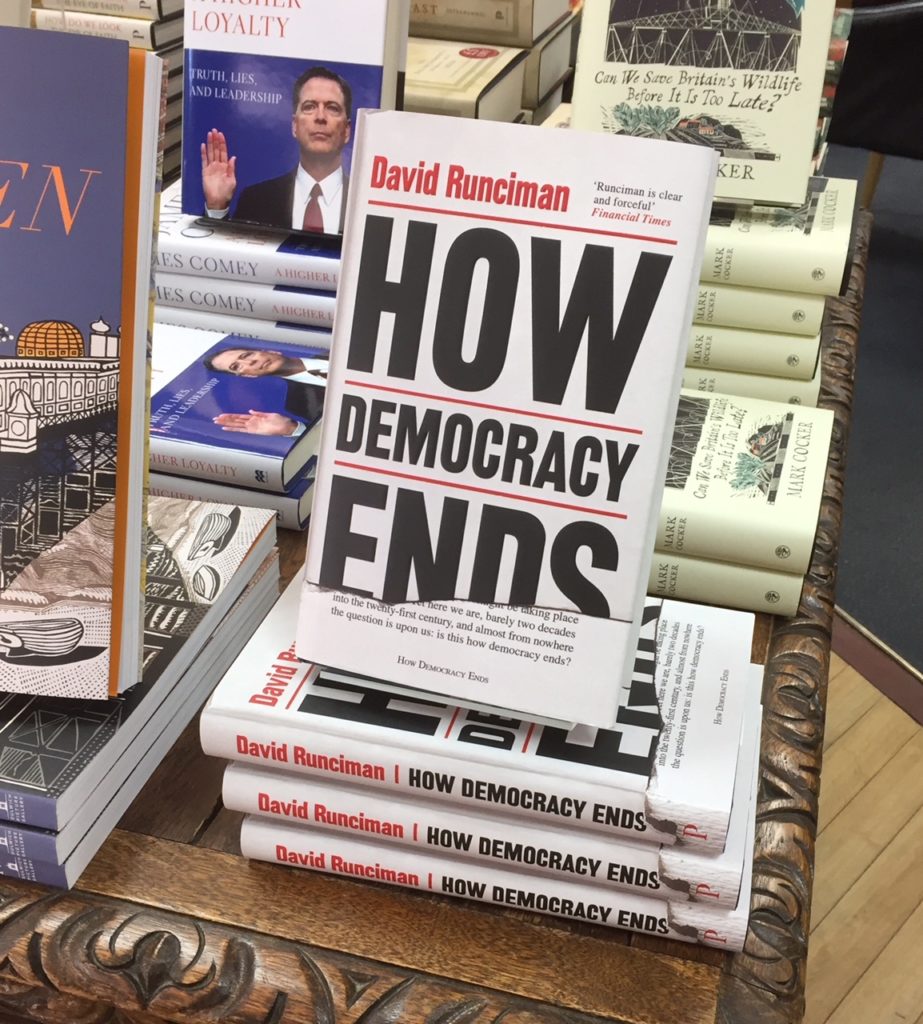“Facebook … treats privacy as a yo-yo for the amusement of its real customers — the advertising community.”
How democracy ends
David Runciman’s book is out. It’s a terrific, thought-provoking read IMHO, not least because it makes a refreshing contrast to the current feeding-frenzy of shocked liberals bewailing Trump and Orban.
I’m doing a public conversation with David at the Cambridge Union on Tuesday May 22nd. Tickets available here
Lilac time
Quote of the Day
”If you’re the smartest person in the room, you’re in the wrong room”
Simon Kuper, writing in the current issue of the Financial Times.
Why providing free parking places is a bad idea
Much as I hate to say it, I agree with Tyler Cowen about how the way we require employers (and stores) to provide free parking provides perverse economic incentives in a society already over-burdened with cars and their environmental disbenefits. Excerpt from an old NYT OpEd he wrote:
Many suburbanites take free parking for granted, whether it’s in the lot of a big-box store or at home in the driveway. Yet the presence of so many parking spaces is an artifact of regulation and serves as a powerful subsidy to cars and car trips. Legally mandated parking lowers the market price of parking spaces, often to zero. Zoning and development restrictions often require a large number of parking spaces attached to a store or a smaller number of spaces attached to a house or apartment block.
If developers were allowed to face directly the high land costs of providing so much parking, the number of spaces would be a result of a careful economic calculation rather than a matter of satisfying a legal requirement. Parking would be scarcer, and more likely to have a price — or a higher one than it does now — and people would be more careful about when and where they drove.
The subsidies are largely invisible to drivers who park their cars — and thus free or cheap parking spaces feel like natural outcomes of the market, or perhaps even an entitlement. Yet the law is allocating this land rather than letting market prices adjudicate whether we need more parking, and whether that parking should be free. We end up overusing land for cars — and overusing cars too. You don’t have to hate sprawl, or automobiles, to want to stop subsidizing that way of life.
Or, as Donald Shoup puts it in his forthcoming Parking and the City, “Minimum parking requirements act like a fertility drug for cars.”
The Bitcoin/blockchain story: a mixture of greed and idealism
This morning’s Observer column:
Because I write about technology I am regularly assailed by people who are exercised about so-called “cryptocurrencies” like bitcoin, which most of them regard as a scam. But when I reply that while bitcoin might be newsworthy, the really important story concerns the blockchain technology that underpins it, their eyes glaze over and they start looking for the nearest exit as they conclude that they are in the grip of Coleridge’s Ancient Mariner.
And, in a sense, they are. Blockchain technology is indeed important, but it seems largely incomprehensible to ordinary mortals, even though the web teems with attempts to explain it…
Things I hadn’t known
The melody of “American Tune,” one of my favorite Paul Simon songs, is taken from a Bach chorale from St. Matthew’s Passion.
(I got this from Tyler Cowen)
Apples on the way
Keep a record of what matters
Dave Winer’s mother died recently and he’s been clearing out the family home. Which prompted this reflection
In hindsight, I realize we should have done a video walkthrough of mom’s house as it was when she left us. Exactly as it was. Now it is staged for sale, all the personal stuff is out. It’s a house transitioning to be a new family’s house. It was our family house for over 50 years. I didn’t think of it because at the time, the way the house was set up was the most normal thing. I never thought that it was an archive of lives that were now over, that it was about to disappear. I mention this so if you end up being the one to close up shop on a family house, take a good video snapshot before you start taking it apart. #




